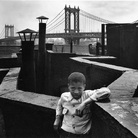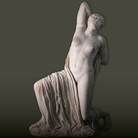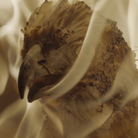Federico Patellani. Professione fotoreporter

Dal 23 April 2015 al 13 September 2015
Torino
Luogo: Palazzo Madama
Indirizzo: piazza Castello
Orari: dal martedì al sabato 10-18. Domenica 10-19
Curatori: Kitti Bolognesi, Giovanna Calvenzi
Enti promotori:
- Fondazione Torino Musei
- Città di Torino
- ExpoTo 2015
- Regione Lombardia
Costo del biglietto: intero € 10, ridotto € 8
Telefono per informazioni: +39 011 4433501
E-Mail info: palazzomadama@fondazionetorinomusei.it
Sito ufficiale: http://www.palazzomadamatorino.it
Palazzo Madama celebra l'opera del fotografo Federico Patellani (Monza 1911 - Milano 1977).
Federico Patellani è stato il primo fotogiornalista italiano e uno dei più importanti fotografi italiani del XX secolo, la cui produzione – realizzata nella quasi totalità per i giornali – è oggi conservata presso il Museo di Fotografia Contemporanea di Milano-Cinisello Balsamo (per deposito di Regione Lombardia). Da questo ricchissimo materiale sono state selezionate circa 90 fotografie in bianco e nero, individuando le immagini che meglio rappresentano le tappe fondamentali della carriera di Patellani dalla fine della Seconda guerra mondiale alla metà degli anni Sessanta, quando il fotografo si dedicò soprattutto alla fotografia di viaggio.
Federico Patellani racconta un’Italia che cerca di dimenticare il passato recente e di ritrovare le proprie radici, di costruire un senso di appartenenza e una capacità di partecipare alla vita civile in un Paese che sta cambiando pelle, da contadino sta diventando industriale.
Il percorso espositivo è suddiviso in cinque sezioni che rappresentano le tematiche più importanti della sua produzione: la distruzione delle città italiane alla fine della Seconda guerra mondiale, la ricostruzione e la ripresa economica, il sud dell’Italia e la Sardegna, la nascita dei concorsi di bellezza e la ripresa del cinema italiano, i ritratti degli artisti e degli intellettuali.
Si avvicina alla fotografia dopo la laurea in Legge, durante il servizio militare in Africa nel 1935, quando documenta con una Leica le operazioni del Genio Militare italiano. Nel 1939 collabora con “il Tempo” di Alberto Mondadori, settimanale che si rifaceva all’esperienza di “Life” adattandola alla realtà italiana, che allora costituiva un luogo di incontro di letterati e intellettuali fra cui Carlo Emilio Gadda ed Eugenio Montale.
Sensibile e colto narratore, Patellani è stato testimone di tutti gli eventi che segnano la società italiana del dopoguerra: dal referendum monarchia-repubblica all’occupazione delle terre nell’Italia meridionale, dal lavoro nelle campagne e nelle fabbriche alla nascita dei concorsi di bellezza, dal mondo del cinema a quello dell’arte e della cultura, alle foto di moda. Nel 1946 parte per un viaggio nel sud – che ripeterà per diversi anni – con gli architetti Lina Bo e Giuseppe Pagani, verso le “gravissime rovine causate dalla disperazione tedesca e dalla lentezza alleata nella fase conclusiva della battaglia per la liberazione di Roma”, come scriverà nel 1977. Realizza importanti reportage in varie zone d’Italia, fra cui Puglia e Sardegna, sede del famoso lavoro sui minatori di Carbonia, realizzato nel 1950.
Oltre alla cronaca, con uguale curiosità si dedica al costume, celebri le sue fotografie sui neonati concorsi di bellezza, scorciatoia di emancipazione e di speranza per molte giovani donne che desideravano lasciarsi alle spalle le miserie della guerra. Cresciuto alla scuola del cinema (già nel 1941 aveva lavorato con Mario Soldati per il film Piccolo Mondo Antico), Patellani è amico di Carlo Ponti, Mario Soldati, Dino De Laurentiis, Alberto Lattuada e con loro stabilisce un sodalizio professionale che lo rende testimone privilegiato sul set di molti film girati in Italia. Ritrae così tutti i più importanti attori e registi, da Totò a Sofia Loren, da Ingrid Bergman a Gina Lollobrigida, da Silvana Mangano a Elsa Martinelli, da Anna Magnani a Giulietta Masina, da Fellini e Visconti a De Sica. Parallelamente frequenta artisti e letterati, salotti mondani e studi di pittori (Thomas Mann, Carlo Carrà, Giuseppe Ungaretti, Elio Vittorini, Ardengo Soffici, Filippo de Pisis). Le sue fotografie sono ancora oggi incredibilmente attuali perché prive di retorica; appare evidente come nel suo lavoro gli stia a cuore solo la possibilità di documentare la realtà in modo sincero.
Il suo lavoro conserva un incredibile sguardo attuale e testimonia, a posteriori, gli sforzi compiuti dagli italiani per la costruzione di un’identità comune, fatta di molti intrecci, di sfumature culturali e di costume.
La mostra, che include un catalogo in vendita presso la mostra, e' a cura di Kitti Bolognesi e Giovanna Calvenzi.
La mostra, che gode del Patrocinio della Città di Torino ed è inserita nel calendario ufficiale di ExpoTo, nasce dalla collaborazione fra Palazzo Madama, Museo di Fotografia Contemporanea e Silvana Editoriale.
L’esposizione rientra nel programma Neorealismo. Cinema, Fotografia, Letteratura, Musica, Teatro. Lo splendore del vero nell’Italia del dopoguerra 1945-1968, un progetto del Museo Nazionale del Cinema di Torino.
Federico Patellani è stato il primo fotogiornalista italiano e uno dei più importanti fotografi italiani del XX secolo, la cui produzione – realizzata nella quasi totalità per i giornali – è oggi conservata presso il Museo di Fotografia Contemporanea di Milano-Cinisello Balsamo (per deposito di Regione Lombardia). Da questo ricchissimo materiale sono state selezionate circa 90 fotografie in bianco e nero, individuando le immagini che meglio rappresentano le tappe fondamentali della carriera di Patellani dalla fine della Seconda guerra mondiale alla metà degli anni Sessanta, quando il fotografo si dedicò soprattutto alla fotografia di viaggio.
Federico Patellani racconta un’Italia che cerca di dimenticare il passato recente e di ritrovare le proprie radici, di costruire un senso di appartenenza e una capacità di partecipare alla vita civile in un Paese che sta cambiando pelle, da contadino sta diventando industriale.
Il percorso espositivo è suddiviso in cinque sezioni che rappresentano le tematiche più importanti della sua produzione: la distruzione delle città italiane alla fine della Seconda guerra mondiale, la ricostruzione e la ripresa economica, il sud dell’Italia e la Sardegna, la nascita dei concorsi di bellezza e la ripresa del cinema italiano, i ritratti degli artisti e degli intellettuali.
Si avvicina alla fotografia dopo la laurea in Legge, durante il servizio militare in Africa nel 1935, quando documenta con una Leica le operazioni del Genio Militare italiano. Nel 1939 collabora con “il Tempo” di Alberto Mondadori, settimanale che si rifaceva all’esperienza di “Life” adattandola alla realtà italiana, che allora costituiva un luogo di incontro di letterati e intellettuali fra cui Carlo Emilio Gadda ed Eugenio Montale.
Sensibile e colto narratore, Patellani è stato testimone di tutti gli eventi che segnano la società italiana del dopoguerra: dal referendum monarchia-repubblica all’occupazione delle terre nell’Italia meridionale, dal lavoro nelle campagne e nelle fabbriche alla nascita dei concorsi di bellezza, dal mondo del cinema a quello dell’arte e della cultura, alle foto di moda. Nel 1946 parte per un viaggio nel sud – che ripeterà per diversi anni – con gli architetti Lina Bo e Giuseppe Pagani, verso le “gravissime rovine causate dalla disperazione tedesca e dalla lentezza alleata nella fase conclusiva della battaglia per la liberazione di Roma”, come scriverà nel 1977. Realizza importanti reportage in varie zone d’Italia, fra cui Puglia e Sardegna, sede del famoso lavoro sui minatori di Carbonia, realizzato nel 1950.
Oltre alla cronaca, con uguale curiosità si dedica al costume, celebri le sue fotografie sui neonati concorsi di bellezza, scorciatoia di emancipazione e di speranza per molte giovani donne che desideravano lasciarsi alle spalle le miserie della guerra. Cresciuto alla scuola del cinema (già nel 1941 aveva lavorato con Mario Soldati per il film Piccolo Mondo Antico), Patellani è amico di Carlo Ponti, Mario Soldati, Dino De Laurentiis, Alberto Lattuada e con loro stabilisce un sodalizio professionale che lo rende testimone privilegiato sul set di molti film girati in Italia. Ritrae così tutti i più importanti attori e registi, da Totò a Sofia Loren, da Ingrid Bergman a Gina Lollobrigida, da Silvana Mangano a Elsa Martinelli, da Anna Magnani a Giulietta Masina, da Fellini e Visconti a De Sica. Parallelamente frequenta artisti e letterati, salotti mondani e studi di pittori (Thomas Mann, Carlo Carrà, Giuseppe Ungaretti, Elio Vittorini, Ardengo Soffici, Filippo de Pisis). Le sue fotografie sono ancora oggi incredibilmente attuali perché prive di retorica; appare evidente come nel suo lavoro gli stia a cuore solo la possibilità di documentare la realtà in modo sincero.
Il suo lavoro conserva un incredibile sguardo attuale e testimonia, a posteriori, gli sforzi compiuti dagli italiani per la costruzione di un’identità comune, fatta di molti intrecci, di sfumature culturali e di costume.
La mostra, che include un catalogo in vendita presso la mostra, e' a cura di Kitti Bolognesi e Giovanna Calvenzi.
La mostra, che gode del Patrocinio della Città di Torino ed è inserita nel calendario ufficiale di ExpoTo, nasce dalla collaborazione fra Palazzo Madama, Museo di Fotografia Contemporanea e Silvana Editoriale.
L’esposizione rientra nel programma Neorealismo. Cinema, Fotografia, Letteratura, Musica, Teatro. Lo splendore del vero nell’Italia del dopoguerra 1945-1968, un progetto del Museo Nazionale del Cinema di Torino.
SCARICA IL COMUNICATO IN PDF
COMMENTI

-
 Dal 2 December 2025 al 19 February 2026
Milano | Centro Culturale di Milano
Dal 2 December 2025 al 19 February 2026
Milano | Centro Culturale di Milano
Walter Rosenblum. Il mondo e la tenerezza
-
 Dal 30 November 2025 al 12 April 2026
Gallarate | Museo MA*GA
Dal 30 November 2025 al 12 April 2026
Gallarate | Museo MA*GA
Kandinsky e l’Italia
-
 Dal 29 November 2025 al 12 April 2026
Roma | Musei Capitolini
Dal 29 November 2025 al 12 April 2026
Roma | Musei Capitolini
La Grecia a Roma
-
 Dal 22 November 2025 al 3 May 2026
Torino | Sale Chiablese dei Musei Reali
Dal 22 November 2025 al 3 May 2026
Torino | Sale Chiablese dei Musei Reali
Orazio Gentileschi. Un pittore in viaggio
-
 Dal 20 November 2025 al 25 January 2026
Firenze | Palazzo Strozzi
Dal 20 November 2025 al 25 January 2026
Firenze | Palazzo Strozzi
Andro Eradze. Bones of Tomorrow
-
 Dal 21 November 2025 al 28 March 2026
Cuneo | Complesso Monumentale di San Francesco
Dal 21 November 2025 al 28 March 2026
Cuneo | Complesso Monumentale di San Francesco
La Galleria Borghese. Da Raffaello a Bernini. Storia di una collezione


